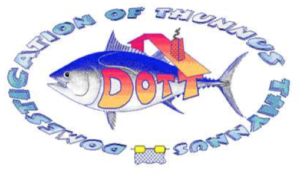Research Directions:
Reproduction and physiology
Fish nutrition and feeding
Description:
 Finding a complete and acceptable food for aquacultured fishes is one of the most important issues in fish farming. Unlike most farmed species, there are some species of commercial interest (Atlantic bluefin tuna, common dentex, greater amberjack) that do not accept the usual foods provided in the form of extruded pellets. The raw feeds that are fed to date (due to their better acceptance) also have many disadvantages (low growth, problem with methods of administration and increased environmental burden, as well a biosecurity problems).
Finding a complete and acceptable food for aquacultured fishes is one of the most important issues in fish farming. Unlike most farmed species, there are some species of commercial interest (Atlantic bluefin tuna, common dentex, greater amberjack) that do not accept the usual foods provided in the form of extruded pellets. The raw feeds that are fed to date (due to their better acceptance) also have many disadvantages (low growth, problem with methods of administration and increased environmental burden, as well a biosecurity problems).
The aim of this program was to design and produce food in the form of dry pellet of improved taste (and therefore better acceptance by fish) and complete nutritional value for the Atlantic bluefin tuna (Thunnus thynnus, Linnaeus). An extrusion method was applied to produce a dry pellet that would meet the nutritional requirements of the species and ensure optimal weight gain, body composition and health. The effect of the size, shape and color of the compound, as well as various attractive substances (fish flour, shrimp flour, and attractive mixture) on the susceptibility of food to fish was evaluated. Different diets were evaluated based on their effect on fish preference (consumption).
Then the foods with the best characteristics were selected and experiments were done in relation to the protein/fat levels in the food to find the best concentrations that will cover the nutritional needs of the fish and give the best growth, conversion ratio, health and desired composition. We also examined the potential and size/age of the first reproductive maturation of Atlantic bluefin tuna under aquaculture conditions, in response to different diets. At the end, optimization of rearing conditions (in relation to growth, health, fish quality, and breeding costs) was undertaken regarding feeding levels.




